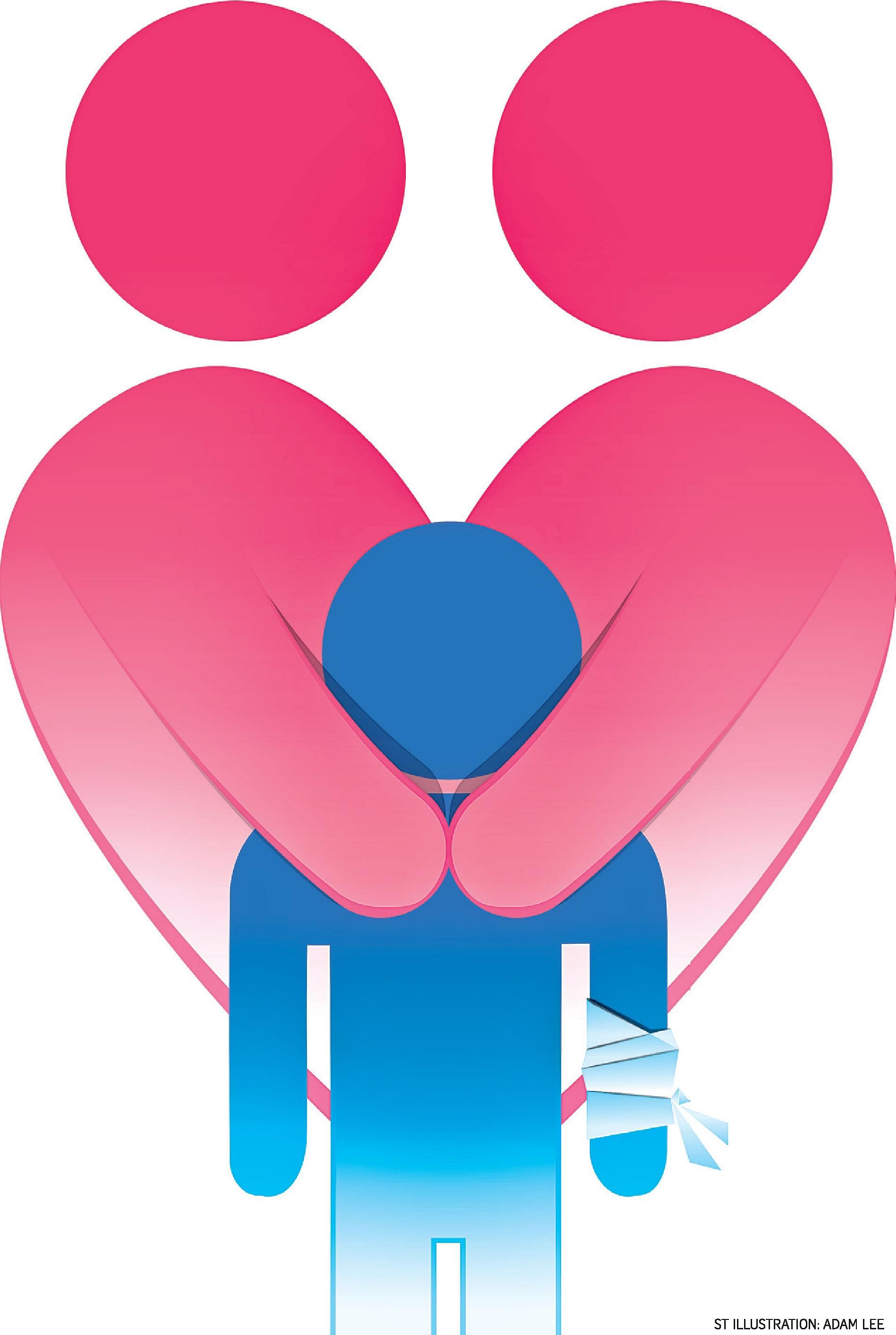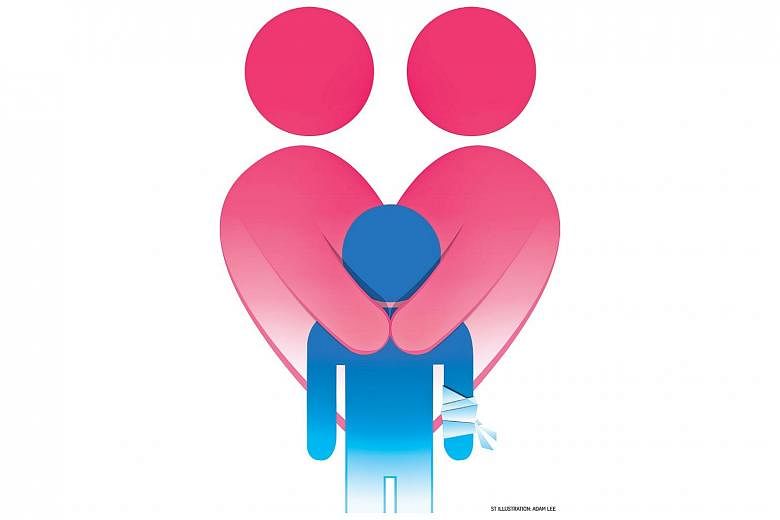In Hanya Yanagihara's behemoth of a novel, A Little Life, the first mention of an act of deliberate self-cutting appeared early in the book when the protagonist, Jude St Francis, with his arm lacerated and bleeding, woke one of his friends to ask him to take him to the doctor.
Abandoned on the doorstep of a monastery as a baby, he was brought up by the monks who subsequently abused him - one of whom also taught him to cut himself. With the years of unremitting self-cutting, Jude "has long ago run out of blank skin on his forearms, and he now recuts over old cuts…when the new cuts heal, they do so in warty furrows", writes Yanagihara.
Jude is, of course, a fictional character; the self-cutting, on the other hand, that is described so vividly is no fictive invention of the author: It is a real-life phenomenon that seems to be disturbingly common among adolescents and young adults. Experts have said that as many as one in five young men and women would do this to themselves at least once; many like Jude St Francis would do it repeatedly and sometimes for many years.
NON-SUICIDAL SELF-INJURY
Cutting and carving one's skin is but one form of what is known as non-suicidal self-injury (NSSI), which is defined as the intentional and direct injuring of one's body tissue without the intent of suicide.
Other methods of inflicting injury include scratching, burning, deliberating hitting one's body against a hard surface, biting and needle-sticking.
All these can, of course, lead to other nasty consequences: disfiguring scars, unhealed wounds which become infected, and contusion and bone fractures. There is also a darker and more sinister side: Some research has shown that those who engage in NSSI are at risk of suicide - it has been suggested that the relatively minor self-destructive acts might prep them for the ultimate self-annihilation by desensitising them to the fear and pain that come from hurting themselves.

The first clinical accounts of NSSI appeared in 1896 in a book with the burlesque title of Anomalies And Curiosities Of Medicine that was written by two American physicians - George Gould and Walter Pyle.
They wrote of "needle girls" - young women who repeatedly inserted sewing needles and pins into their skin or cut themselves. The two doctors conceived the self-harm behaviour to be a form of hysteria and described the women's behaviour as deceitful and attention-seeking. The view that people - with the inherent sexism that it was women in particular - inflict injuries on themselves to influence and manipulate others persisted until fairly recently. Research has since found that this is probably true only in a very small minority of cases.
Most young people engage in self-injury as a way to alleviate negative thoughts or feelings such as depression, anxiety, tension and emotional distress.
Some do so as a sort of self-punishment and as an expression of anger, derogation or self-loathing. The resultant physical pain is a way to release pent-up emotional pain; most self-injurers report that the jolt of pain calms them and brings a sense of relief (this possibly comes from the release of opioid-like endorphins in the brain that soothe the pain and even induce euphoria).
In a way, it is like using drugs or alcohol to try to feel better, which can lead to a psychological dependency, then a craving which soon becomes an addiction - with the person being seized by and in thrall to the thought of self-injury, even when it is not acted upon.
Recent studies in Britain, the United States and Canada show an alarming upward trend in the number of cases over the years. The situation in Singapore is unclear as there has been no rigorously conducted and comprehensive study done to establish the rate of NSSI in the general population.
At present, it is difficult to say for sure if the increase in the number of cases reported is because of more people coming forth to seek help, or if it is due to an actual increase in new cases - which is what most mental health experts believe. And if so, could it be symptomatic of some aspects of our time ?
The burgeoning use of the Internet, especially among the population of teenagers and young adults that engages most in NSSI, is a probable reason for this upswing if that is true. There are hundreds of explicit YouTube videos and photographs of people injuring themselves; some of the clips have song lyrics and other texts which normalise if not romanticise or glamourise such acts. There are virtual communities where self-injury is accepted as well as online forums where there is sharing of techniques. Social media - as is already obvious - is an effective (and at times pernicious) vehicle of contagion.
MENTAL HEALTH ISSUES
NSSI is an indication of some underlying problem and it may be symptomatic of other mental illnesses, which unbeknown to most people are by no means rare among young people; the World Health Organisation has estimated that worldwide, 10 per cent to 20 per cent of children and adolescents have mental disorders.
The situation is made more dire when these troubled young people have particular difficulties in accessing help on their own since they lack the wherewithal to do so: they are bewildered and may not even realise that they are not well; they also fear the stigma of standing out in an awful way that invites bullying and ridicule; and they don't have the financial means to seek professional help. The onus of ensuring their well-being inevitably falls on those adults close to them - in particular, parents and teachers.
Recognising such problems and differentiating them from the expected and normal adolescent turmoil, however, can be difficult; this is compounded by the understandable tendency of most young people to hide their symptoms (those with NSSI, for instance, would usually go to great lengths to conceal their wounds and scars by wearing trousers and shirts with long sleeves, avoiding any sports that would lead to the exposure of such scars and giving spurious explanations for repeated injuries).
Parents obviously need to be vigilant but they often find themselves in the tricky situation of having to steer between what the British psychoanalyst Rozsika Parker called "the Scylla of intrusiveness and the Charybdis of neglect" - to expect that they should know exactly what their children feel and do is not reasonable; yet when something bad happens, there would be the usual explicit or implicit recrimination and censure that the parents are somehow culpable.
Good consistent parenting is devilishly difficult and, despite all the good intentions and efforts, the outcome can still be terrifyingly uncertain.
We do have counsellors in our local schools, polytechnics and universities who are trained to handle emotional and psychological issues, and while they have access to specialised child and adolescent mental health services, there will always be some young people who would not be identified and would fall through the cracks, with their lives unravelling in the process.
"We need to offer children better mental health screening and to understand that mental health service for children works best not on a vaccine model, in which a single dramatic intervention eliminates a problem forever, but on a dental model, in which constant care is required to prevent decay," writes author and professor of clinical psychology Andrew Solomon.
Unchecked and untreated, that "decay" would not only blight a child's development, educational attainments and the prospect of living a fulfilling and productive life, but also might even be deadly.
It means a young life vanquished with all the years unlived, all the potential unrealised; and all those lost opportunities of working things out.
•Professor Chong Siow Ann is vice-chairman of the medical board (research) at the Institute of Mental Health.


